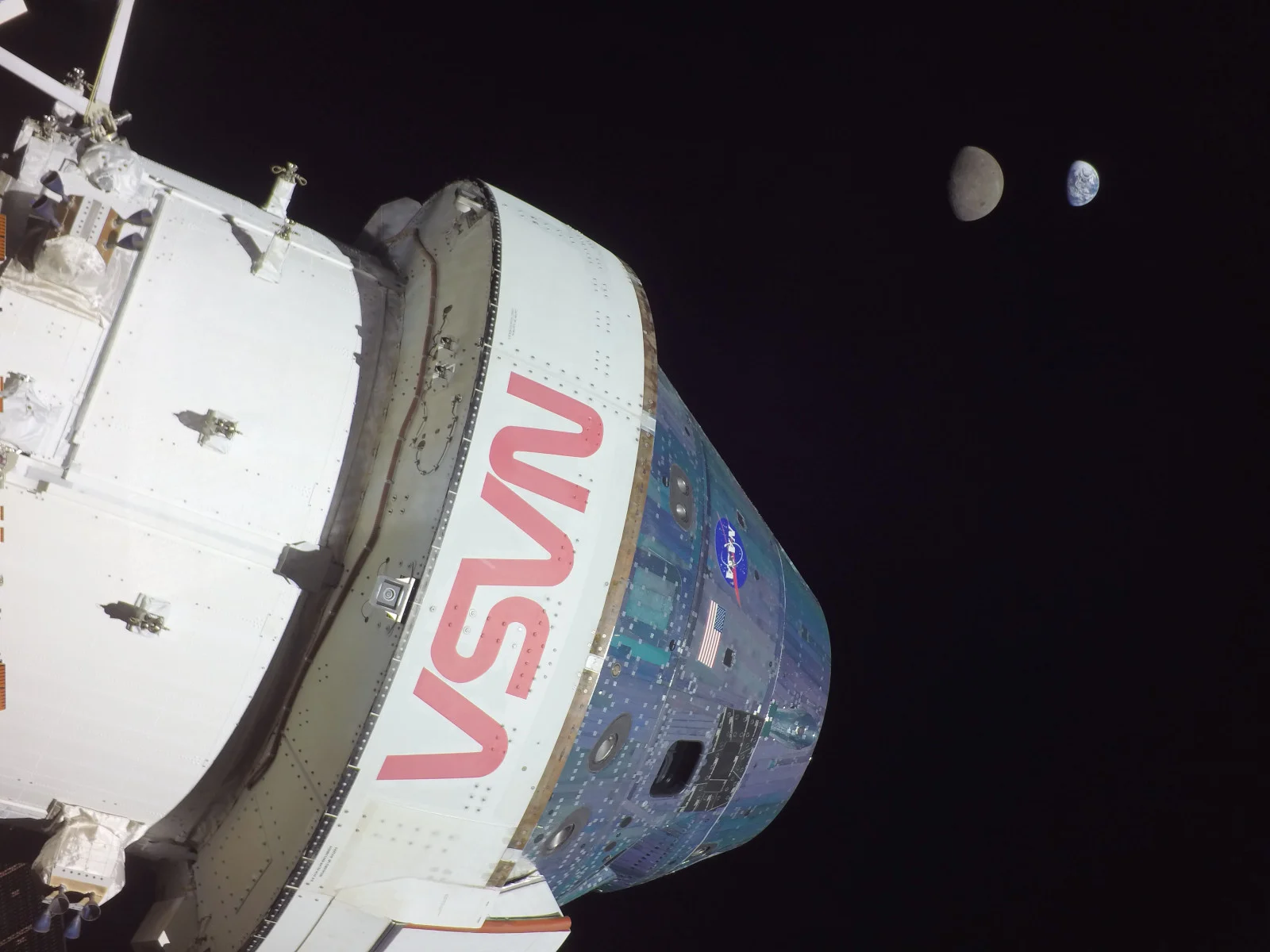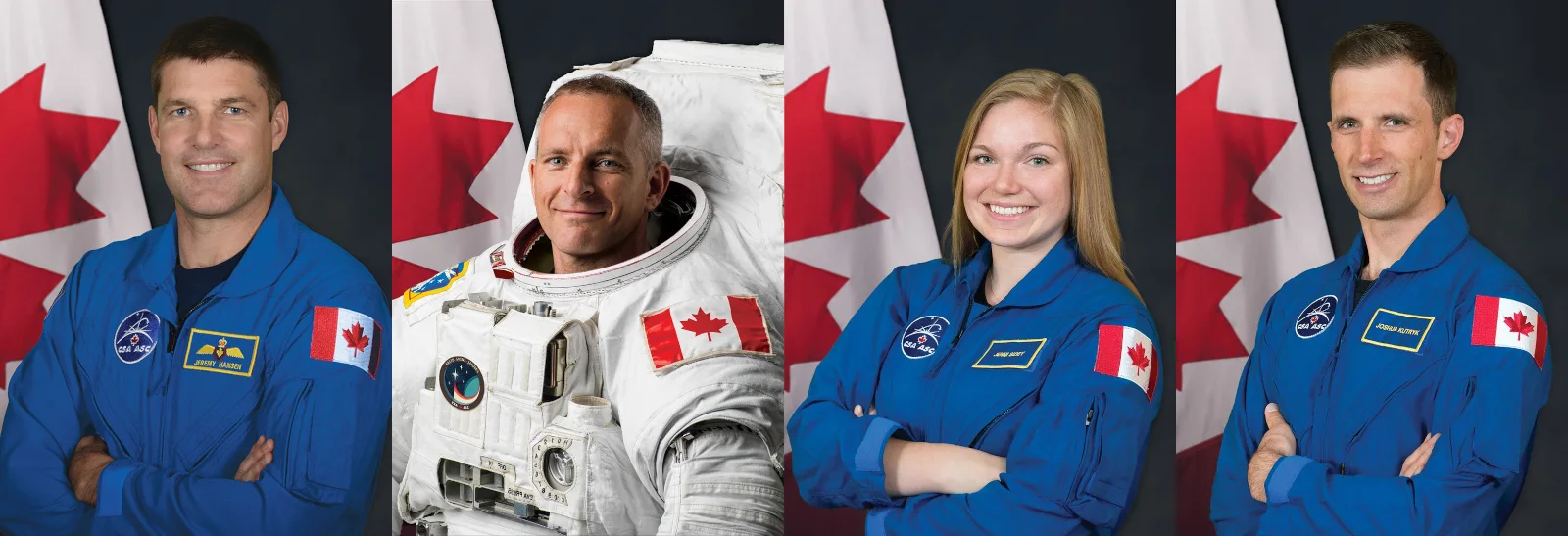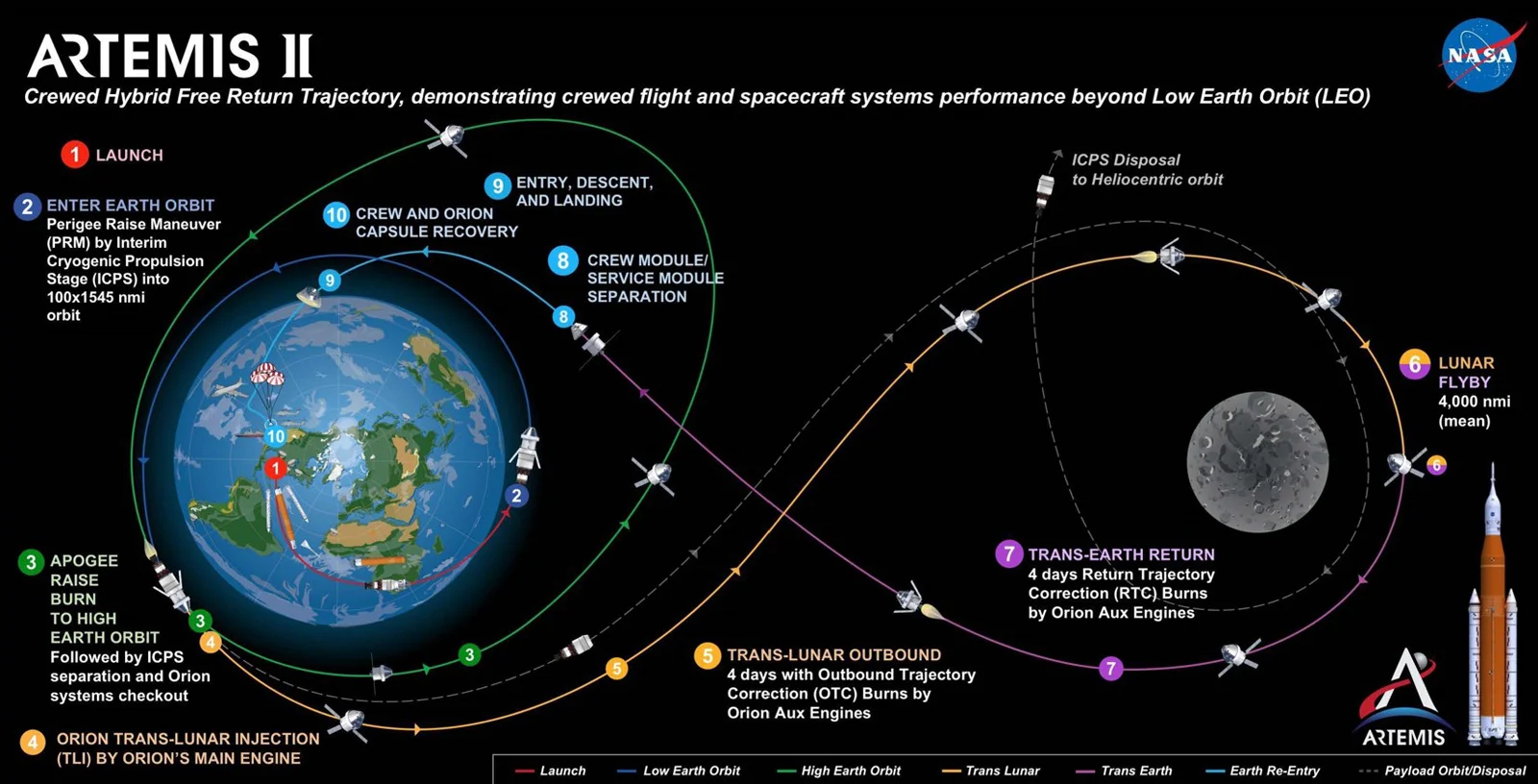
Which Canadian astronaut will be chosen to fly around the Moon?
One of these four will become the first Canadian to travel to deep space and visit the Moon.
NASA and the Canadian Space Agency are about to announce who will become the first astronauts to fly around the Moon in over 50 years. A Canadian is among those chosen, but who will it be?
Sometime in 2024, NASA's Artemis II mission is scheduled to launch as the first crewed flight to the Moon since 1972. On Monday, April 3, 2023, the world will meet the four astronauts going on that incredible journey.
While NASA has filled three of the seats on the Orion spacecraft from their pool of 41 active American astronauts, our nation's contributions to space exploration have earned one Canadian a reserved seat on that flight.

This view of Earth and the Moon was captured during the Artemis 1 mission in 2022. Very soon, the first humans to travel to deep space in over 50 years will see this same view with their own eyes as they fly on Artemis 2's Orion spacecraft. Credit: NASA
On Monday, in a live broadcast event starting at 11 a.m. EDT, we will learn who is to become the first Canadian to ever visit deep space and the Moon.
Read more: Canada's space technology and innovations are crucial to the Artemis missions
Meet Canada's astronauts
Canada's active astronaut team consists of four members: Jeremy Hansen, David Saint-Jacques, Jennifer Sidey-Gibbons, and Joshua Kutryk.

From left to right, Canadian astronauts Jeremy Hansen, David Saint-Jacques, Jennifer Sidey-Gibbons, and Joshua Kutryk. Credit: CSA
Jeremy Hansen was selected to represent Canada in space in 2009. Growing up in southwestern Ontario, Hansen has been a fan of Star Wars since he was a kid, and he has been flying since he was a teenager. He served as a CF-18 fighter pilot in the Canadian Armed Forces and has degrees in space sciences and physics.
When asked why he wanted to become an astronaut, Hansen replied: "The idea of exploring new places and accomplishing the seemingly impossible excites me."
David Saint-Jacques was also selected in 2009. Raised in Saint-Lambert, near Montreal, Saint-Jacques is an engineer, an astrophysicist, and a certified family doctor.
When Saint-Jacques saw the first images taken of Earth from the Moon as a child, it inspired him. "They showed me the immensity of the universe around us, the splendour and obvious fragility of our planet," he told the Canadian Space Agency. So when the chance to join Canada's astronaut team came up, he said it was that same little boy he once was that convinced him to apply.
Of Canada's four active astronauts, Saint-Jacques is the only one who has been to space. He was part of Expedition 58/59 on the International Space Station in 2019. While there, he set a record as the Canadian astronaut with the longest single space flight, totalling 204 days in orbit.
Jennifer Sidey-Gibbons from Calgary, Alberta, joined Canada's astronaut team in 2017. Fascinated by discovering how things worked, she earned her Ph.D. in engineering. During her undergraduate studies at McGill University, she also worked with the Canadian Space Agency and the National Research Council's Flight Research Laboratory to study how flames behave and spread in the microgravity of low-Earth orbit.
Inspired to become an astronaut for the opportunity to advance science for the benefit of society, not to mention the challenge, Sidey-Gibbons added: "It will also provide me with a platform from which I may inspire a diverse group of young people to pursue their interests in science and engineering subjects."
Joshua Kutryk hails from Fort Saskatchewan, Alberta. On the road to becoming an astronaut, Kutryk earned a degree in engineering and master's degrees in space studies, flight test engineering, and defence studies. He became a fighter pilot in the Canadian Armed Forces and worked as an experimental test pilot.
Originally one of the 16 finalists for the 2009 Canadian astronaut recruitment campaign, alongside Hansen and Saint-Jacques, Kutryk was selected during the 2017 campaign with Sidey-Gibbons.
Asked why he wanted to become an astronaut, Kutryk told the CSA: "As a child I was fascinated with space. I knew that my life would focus on helping explore it. As an adult, I realize human space exploration is important to us all as individuals and as Canadians. I have always wanted to leave the world a better place than I found it, and I believe that space is one area where I can do so. I want to serve Canadians in a way befitting my aptitudes and interests. I want to inspire them. Above all, I want to help humanity broaden its collective horizon."
What is Artemis II?
According to NASA:
Artemis II is the first crewed mission aboard NASA's foundational human deep space capabilities: the Space Launch System rocket, Orion spacecraft, and the ground systems needed to launch them. The approximately 10-day mission will test and stress the Orion spacecraft's life-support systems to prove the capabilities and techniques required to live and work in deep space in ways only humans can do.

This diagram shows the path Orion will take as it flies on the Artemis II mission, carrying four astronauts on the next phase of human space exploration. Credit: NASA
"This mission, planned to launch no later than May 2024, would make Canada the second country to have an astronaut fly around the Moon," the Canadian Space Agency said on their website. "During Artemis II, the crew will set a record for the farthest human travel beyond the far side of the Moon."
The current records for the farthest distance beyond the far side of the Moon and the farthest distance travelled from Earth are held by NASA astronauts Jim Lovell, John Swigert, and Fred Haise during Apollo 13 in April of 1970. The mission may be famous for the accident that endangered the crew and caused them to miss their opportunity to visit the lunar surface. However, when they entered lunar orbit on April 14, they were 254 kilometres beyond the Moon's far side and a total of 400,171 kilometres from Earth — both record distances for a crewed spacecraft.
For the Artemis II mission, there is no way of knowing the total distance the Orion spacecraft will travel from Earth until the day it lifts off from Kennedy Space Center. However, it is expected to fly by the far side of the Moon at a distance of over 7,400 kilometres. So, that — in of itself — will set a new space record. If the mission's timing puts the Moon far enough away, the Artemis II crew could also break Apollo 13's record distance from Earth.
Following Artemis II, NASA plans to launch Artemis III sometime in 2025, which will deliver humans to the surface of the Moon for the first time since December 1972. The success of these missions will act as stepping stones to establishing the Lunar Gateway Station — the first space station in lunar orbit — and in the long run, to support the first human exploration of the planet Mars.











